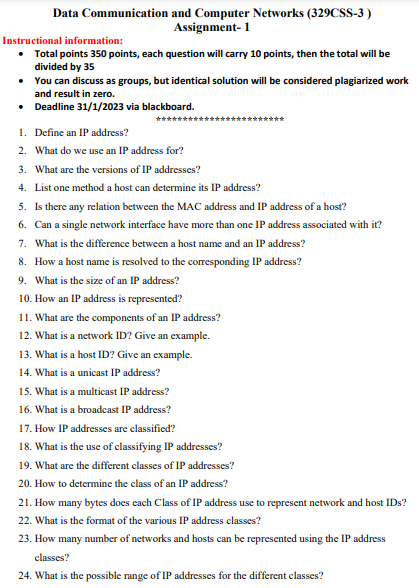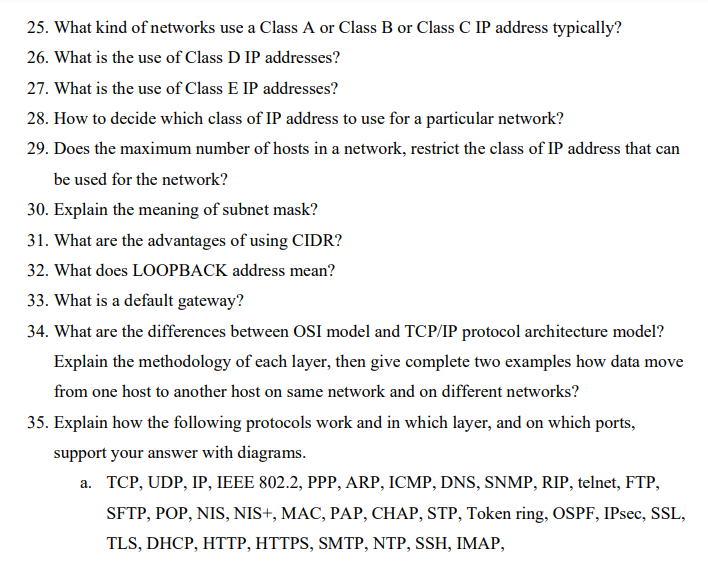Question
1. Define an IP address? 2. What do we use an IP address for? 3. What are the versions of IP addresses? 4. List one
1. Define an IP address?
2. What do we use an IP address for?
3. What are the versions of IP addresses?
4. List one method a host can determine its IP address?
5. Is there any relation between the MAC address and IP address of a host?
6. Can a single network interface have more than one IP address associated with it?
7. What is the difference between a host name and an IP address?
8. How a host name is resolved to the corresponding IP address?
9. What is the size of an IP address?
10. How an IP address is represented?
11. What are the components of an IP address?
12. What is a network ID? Give an example.
13. What is a host ID? Give an example.
14. What is a unicast IP address?
15. What is a multicast IP address?
16. What is a broadcast IP address?
17. How IP addresses are classified?
18. What is the use of classifying IP addresses?
19. What are the different classes of IP addresses?
20. How to determine the class of an IP address?
21. How many bytes does each Class of IP address use to represent network and host IDs?
22. What is the format of the various IP address classes?
23. How many number of networks and hosts can be represented using the IP address classes?
24. What is the possible range of IP addresses for the different classes?

25. What kind of networks use a Class A or Class B or Class C IP address typically?
26. What is the use of Class D IP addresses?
27. What is the use of Class E IP addresses?
28. How to decide which class of IP address to use for a particular network?
29. Does the maximum number of hosts in a network, restrict the class of IP address that can be used for the network?
30. Explain the meaning of subnet mask?
31. What are the advantages of using CIDR?
32. What does LOOPBACK address mean?
33. What is a default gateway?
34. What are the differences between OSI model and TCP/IP protocol architecture model? Explain the methodology of each layer, then give complete two examples how data move from one host to another host on same network and on different networks?
35. Explain how the following protocols work and in which layer, and on which ports, support your answer with diagrams.
a. TCP, UDP, IP, IEEE 802.2, PPP, ARP, ICMP, DNS, SNMP, RIP, telnet, FTP, SFTP, POP, NIS, NIS+, MAC, PAP, CHAP, STP, Token ring, OSPF, IPsec, SSL, TLS, DHCP, HTTP, HTTPS, SMTP, NTP, SSH, IMAP,

Step by Step Solution
There are 3 Steps involved in it
Step: 1

Get Instant Access to Expert-Tailored Solutions
See step-by-step solutions with expert insights and AI powered tools for academic success
Step: 2

Step: 3

Ace Your Homework with AI
Get the answers you need in no time with our AI-driven, step-by-step assistance
Get Started


